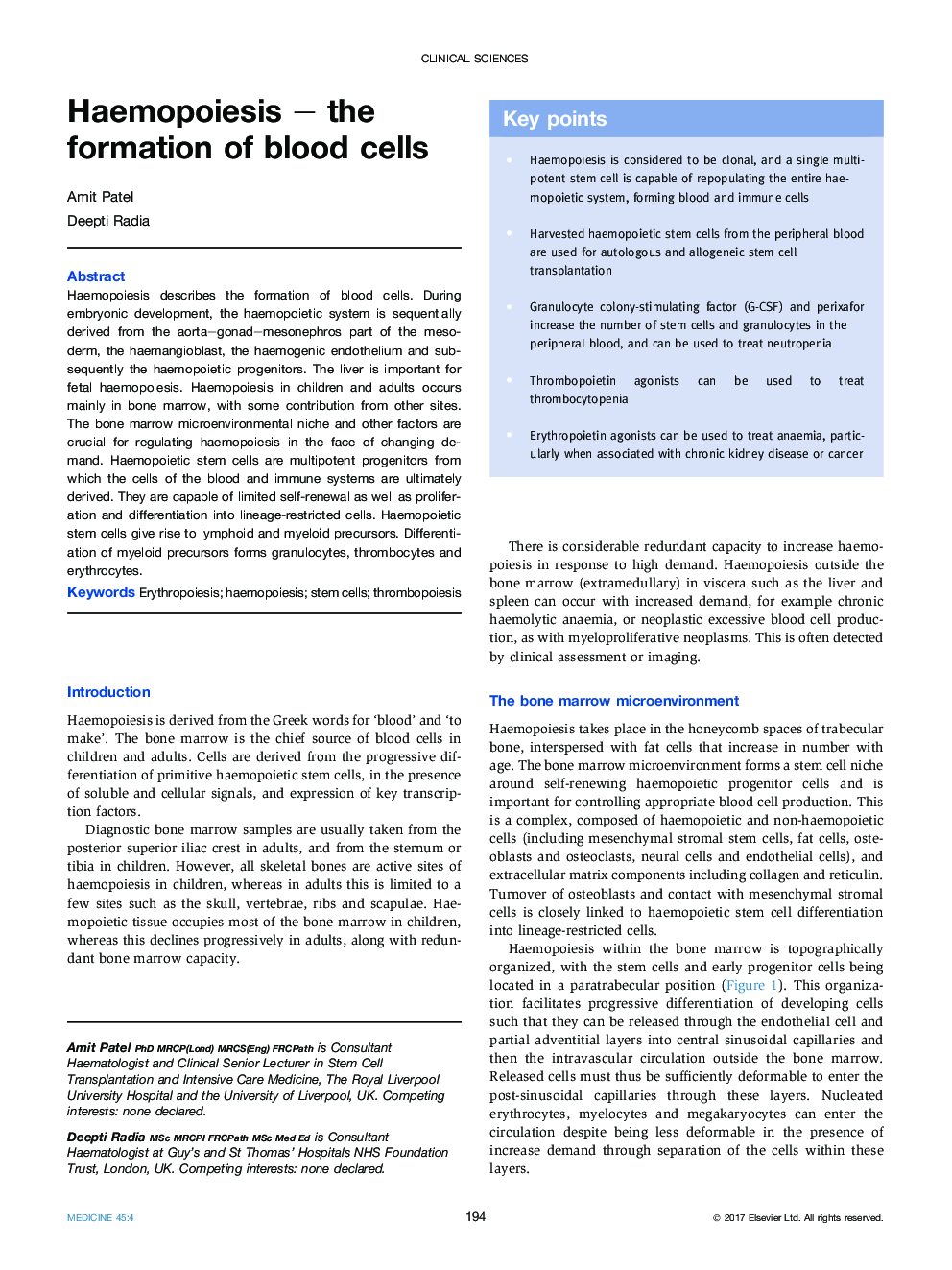| Article ID | Journal | Published Year | Pages | File Type |
|---|---|---|---|---|
| 5681276 | Medicine | 2017 | 4 Pages |
Abstract
Haemopoiesis describes the formation of blood cells. During embryonic development, the haemopoietic system is sequentially derived from the aorta-gonad-mesonephros part of the mesoderm, the haemangioblast, the haemogenic endothelium and subsequently the haemopoietic progenitors. The liver is important for fetal haemopoiesis. Haemopoiesis in children and adults occurs mainly in bone marrow, with some contribution from other sites. The bone marrow microenvironmental niche and other factors are crucial for regulating haemopoiesis in the face of changing demand. Haemopoietic stem cells are multipotent progenitors from which the cells of the blood and immune systems are ultimately derived. They are capable of limited self-renewal as well as proliferation and differentiation into lineage-restricted cells. Haemopoietic stem cells give rise to lymphoid and myeloid precursors. Differentiation of myeloid precursors forms granulocytes, thrombocytes and erythrocytes.
Related Topics
Health Sciences
Medicine and Dentistry
Medicine and Dentistry (General)
Authors
Amit Patel, Deepti Radia,
